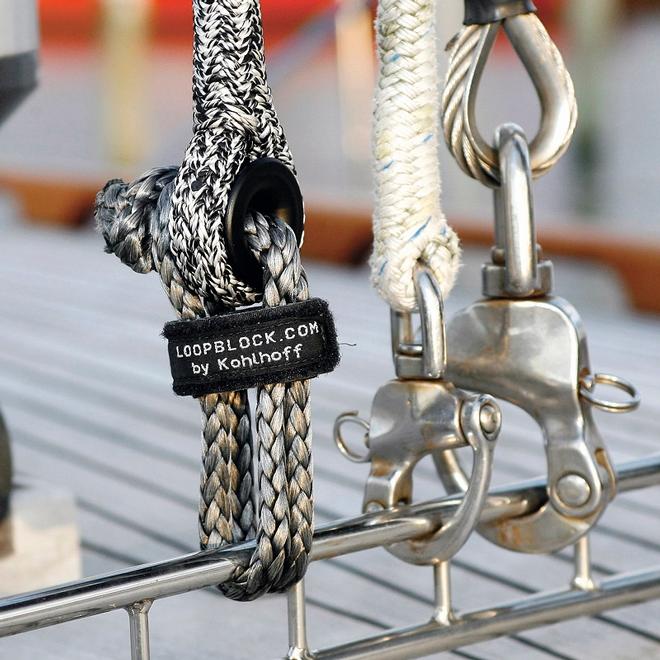Soft shackles are a win-win
by Phil Anniss, upffront.com on 10 Aug 2016

Lightweight, zero corrosion and kind to deck, mast, rigging and sails upffront.com
Soft shackles are a fraction of the weight, stronger, safer and have a similar life span as their metal equivalents. Generally made of single braid, polyurethane coated Dyneema® SK75 or SK78 with a diamond stopper knot, they can be used to replace virtually every stainless shackle on-board.
Applications
- Attach halyards to sails instead of a snap shackle
- Attach sheets to sails and reduce snagging and impact damage to mast and rigging
- Attach blocks quickly and easily to toe rail or deck padeyes
o An increasing number of blocks on the market are designed to be attached using soft shackles, strops or lashings
- They can be used as sail hanks
the list goes on...
A soft, strong and secure universal connector!
Benefits
- Super lightweight compared to stainless equivalents - weight savings of 70-80%
- Quick, simple, reliable connection
- Easy to remove, never binds even after heavy load
- Excellent abrasion resistance
- No corrosion
- They naturally articulate
- reduce need for additional metallic toggles
- Self-aligning to load angle
- Flexibility – the same soft shackle can be used in a wide range of applications
- Reduce damage to mast, rigging, deck and sails
- Dyneema® is waterproof and floats – no more worrying about dropping that pin over the side!
Single line or twin line shackle
There are two general styles/configurations of soft shackle: those that look like a single line with the diamond knot at one end and an eye splice at the other end (which can be opened to slip over the knot); or where the eye splice is formed by passing the line through itself which leaves the body of the shackle as x2 individual lines.
They are both made from exactly the same material, with the same strength properties, they are just a different construction technique. Which type to use mainly comes down to personal preference, however, at upffront.com we would recommend the twin line version for x2 reasons: we believe they are a little easier to open/close and secondly, blocks tend to sit more comfortably on the two lines as they can move around to take the load more evenly.
Maintenance and replacement
Being waterproof and corrosion resistant there is very little that needs to be done to maintain your soft shackles. Assuming the bearing surfaces are smooth you should see relatively little abrasion of the fibre.
As with all rigging elements, the life of the shackle is primarily dependent on the normal working load as a percentage of its designed break load. For example, a shackle working at 25% of its break load will last twice as long as a shackle working at 50% of its break load.
Shackles should be inspected as part of your routine maintenance and annually removed for a full visual inspection. If any fluffing of the fibre is evident, it should be replaced and, as a precaution, we would recommend general replacement after 3-5 years depending on use.
Conclusion
If you haven't made the switch to soft shackles on your boat, you really should consider it. It is quick and simple to change and can be a relatively inexpensive upgrade which offers many performance and ease-of-use advantages. Click here for more technical details on our range of soft shackles.
About Upffront.com
Upffront.com offers an extensive range of sailing hardware and rigging systems online for customers worldwide. Our focus is on sailing systems and our aim is to improve knowledge and accessibility to the latest developments in lightweight, composite rigging and promote lighter, faster, safer sailing for boats of all shapes and sizes from dinghy's to superyachts.
For more information visit www.upffront.com or e-mail support@upffront.com
If you want to link to this article then please use this URL: www.sail-world.com/147237